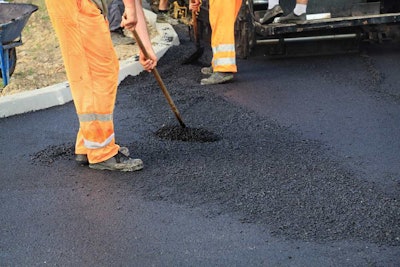by John Keating

At NAPA’s recent Annual Meeting, keynote speaker Jim Collins emphasized that we all need to face “the brutal facts” as we make decisions about our businesses. He spoke of explorers in Antarctica whose choices make the difference between life and death, and compared them to business leaders whose decisions affect the well-being and even the survival of their companies.
I’m sure the idea of “brutal facts” resonated with many in the audience. Our economy has been battered by recession since 2008 and infrastructure spending remains flat. Public officials continue to seek new ways to stretch their dollars and maintain the roads and highways that are vital to America’s economic health.
These are the facts. While they may look brutal to some, they point to a road ahead for the asphalt industry. Asphalt is the most economically and environmentally sustainable material for pavements, partly because it can be recycled and reused indefinitely.
America has 18 billion tons of asphalt in place on our roads and highways. This is a resource that can be reused to reduce costs to the taxpayer, keep reclaimed material out of landfills, conserve natural resources, and keep roads smooth, safe, durable, and quiet. Asphalt pavement recycling conserved more than 3.3 million tons (19 million barrels) of asphalt binder in 2011. It also saved the public at least $1.5 billion dollars.
We are doing a great job, and we can do even better. In 2008, when the overall rate of reuse of reclaimed asphalt was 12 percent, NAPA set a goal of increasing it to 25 percent. As of 2011, the rate was 18 percent – a remarkable increase in just three years. We continue to work with AASHTO, FHWA, the State Asphalt Pavement Associations, and the National Center for Asphalt Technology to reach our goal. By delivering high-performance, high-quality pavements at an affordable price, our industry will continue to dominate the pavement market.
The recycling initiative offers a template for success in today’s marketplace. We have to be smarter, by building on implementable research. We have to be better, by offering pavements that meet every need (think quiet open-surfaced pavements, durable stone-matrix asphalt, Perpetual Pavements) of every customer (from DOTs to real-estate developers to county engineers). We have to be more affordable, not only by recycling but also by designing thinner pavements that can last practically forever.
This is a call to action for the asphalt industry. NAPA has the programs that can lead the industry in a positive direction. The members of NAPA – the asphalt producers of America – form a powerful cohort. For us to prevail, we all need to commit to senior management support, commit to unleash our grassroots potential, and commit to support the industry with dollars and people power. We have the most effective and powerful team and grassroots network in the construction industry. Only we can unleash this power. Only we can drive our initiatives locally and nationally.

Editor’s Note: John Keating is president and COO East of Oldcastle Materials Group. He also serves as 2013 chairman of the board of directors for the National Asphalt Pavement Association (NAPA).













